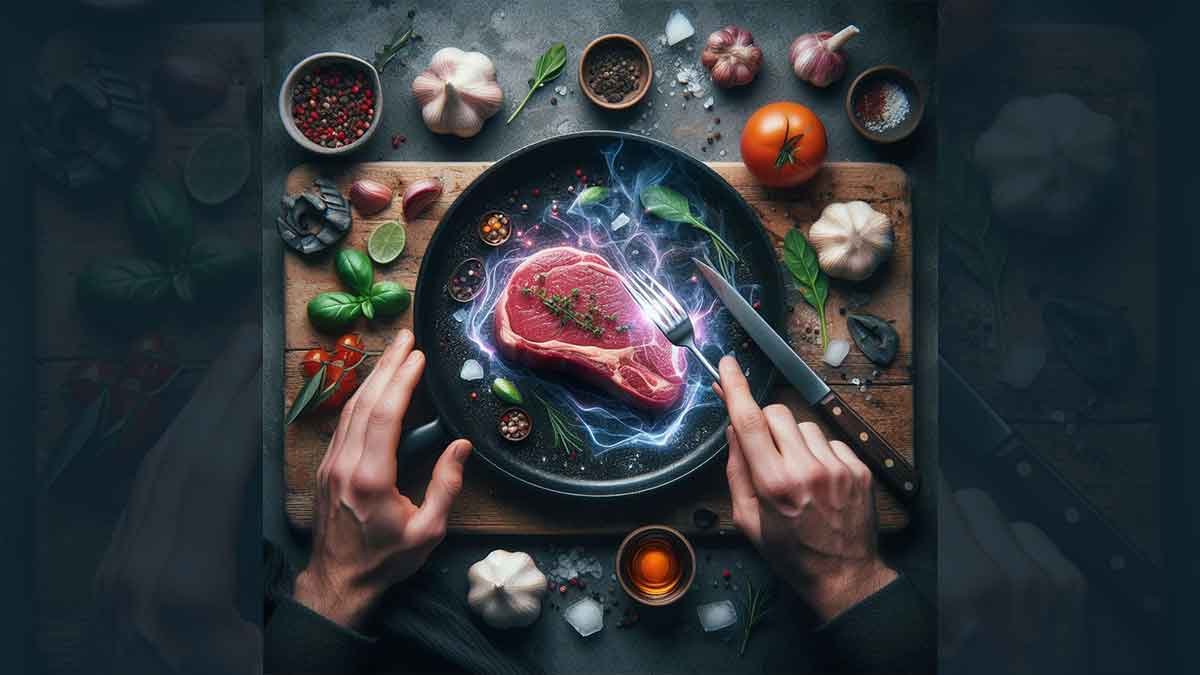
How to Cook Chuck Steak
Introduction
Chuck steak, often considered a budget-friendly cut, is often relegated to the back of the butcher’s case. But what if I told you it holds the key to unlocking a world of delicious possibilities? With its rich beefy flavor, marbled texture, and versatility, chuck steak can be transformed into tender, mouthwatering dishes that rival pricier cuts.
Table of Contents
Choosing the Right Steak
Cuts
Explore various options like chuck eye roll, shoulder tender, flat iron steak, or Denver cut. Each offers unique characteristics and thicknesses.
Marbling
While chuck naturally has less marbling, opt for cuts with some visible marbling for extra flavor and tenderness.
Thickness
Thicker cuts (1-2 inches) are ideal for slow-cooking methods like braising or stewing, while thinner cuts (1/2-1 inch) work well for grilling, pan-searing, or stir-fries.
Freshness
Look for bright red meat with minimal browning or graying, indicating freshness.
Cooking Methods
Slow-Cooking
Embrace the magic of low and slow cooking! Braising, stewing, and pot roasting are perfect for tenderizing chuck steak and infusing it with deep flavors. Use broths, vegetables, herbs, and spices to create flavorful cooking liquids.
Pan-Searing
Sear the steak in a hot pan to lock in juices and create a beautiful crust. Finish in the oven or with a quick braise for added tenderness.
Grilling
Get that smoky, summery flavor! Marinate the steak beforehand for extra punch and cook over medium-high heat to achieve the desired doneness.
Stir-Frying
Thinly slice chuck steak for quick and flavorful stir-fries. Marinate it in Asian-inspired sauces for an extra kick.
Flavorful Enhancements:
Marinades
Marinades work wonders on chuck steak, tenderizing it and infusing it with flavor. Experiment with various combinations of herbs, spices, oils, vinegars, and acidic ingredients like yogurt or citrus juices.
Brines
Brining adds moisture and enhances flavor. Use a simple salt-water brine or create more complex brines with herbs, spices, and aromatics.
Seasonings
Don’t underestimate the power of salt, pepper, and other seasonings! Experiment with garlic powder, onion powder, smoked paprika, chili powder, or your favorite spice blends.
Acids
Acids like lemon juice, vinegar, or even yogurt can brighten flavors and add depth to your dishes.
Cooking Tips:
- Don’t overcook: Chuck steak benefits from low and slow cooking or quick searing to prevent dryness. Use a meat thermometer to ensure perfect doneness (145°F for medium-rare).
- Resting is key: Let the cooked steak rest for 5-10 minutes before slicing. This allows the juices to be redistributed, resulting in a more tender and flavorful experience.
- Embrace leftovers: Shred or chop leftover cooked chuck steak for sandwiches, tacos, salads, or pasta dishes. It’s a versatile ingredient that keeps on giving!
Recipe Ideas:
- Braised Chuck Steak with Root Vegetables: A comforting classic with tender beef, flavorful broth, and melt-in-your-mouth root vegetables.
- Korean BBQ Chuck Steak Tacos: Marinated chuck steak cooked to perfection, served on warm tortillas with kimchi, pickled vegetables, and gochujang sauce.
- Cheesesteak Phillies: A budget-friendly twist on the classic, using thinly sliced chuck steak seasoned and cooked to your liking.
- Steak and Pepper Stir-Fry: A quick and flavorful stir-fry with tender beef, colorful bell peppers, and your favorite Asian-inspired sauce.
Bonus Tips:
- Tenderizing: If you’re short on time, consider tenderizing the meat with a mallet or a commercial meat tenderizer before cooking.
- Fat trimming: While some fat adds flavor, excess fat can make the final dish greasy. Trim away any large pockets of fat before cooking.
- Get creative: Don’t be afraid to experiment! Chuck steak is a versatile ingredient that can be adapted to various cuisines and flavor profiles.
FAQs:
How to achieve the perfect sear on a chuck steak?
Mastering the perfect sear involves preheating your pan, patting the steak dry, and ensuring it reaches room temperature before cooking. This process enhances the Maillard reaction, resulting in a flavorful crust.
Can I marinate chuck steak for too long?
While marinating adds flavor, prolonged marination can make the meat mushy. Aim for 2-4 hours for optimal results, allowing the flavors to penetrate without compromising the steak’s texture.
Is it necessary to rest chuck steak before carving?
Resting is crucial for redistributing juices, ensuring a moist and flavorful outcome. Allow your chuck steak to rest for at least 10 minutes before carving for the best results.
How can I tell if my chuck steak is done?
Use a meat thermometer to check the internal temperature. For medium-rare, aim for 130°F (54°C), medium 140°F (60°C), and medium-well 150°F (66°C).
Can chuck steak be cooked in a slow cooker?
Absolutely! Chuck steak is ideal for slow cooking methods. Set your slow cooker to low, add liquid, and let it cook for 6-8 hours for a tender and flavorful result.
What sides pair best with chuck steak?
Classic pairings include roasted vegetables, mashed potatoes, or a crisp salad. Experiment with sides to find your perfect combination.
Is chuck steak tough?
Yes, it can be tough if not cooked properly. But with the right cooking methods and techniques,
I hope this article helps you conquer the world of chuck steak!